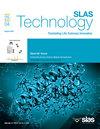Application effect of rehabilitation robots in rehabilitation of limb movement disorders based on neural network algorithms
IF 3.7
4区 医学
Q3 BIOCHEMICAL RESEARCH METHODS
引用次数: 0
Abstract
With the continuous advancement of computer technology and sensor technology, rehabilitation robots have shown great potential in the rehabilitation treatment of limb movement disorders. This paper designs a rehabilitation robot based on a neural network algorithm to improve the rehabilitation effect of patients with limb movement disorders. The robot consists of a four-axis robotic arm, a three-finger gripper, a wheeled chassis and a variety of sensors. The control program written in C language and the host computer program written in Python language realize the control of motion and force, and the neural network algorithm is used to accurately adjust the position and force. In the control system design, the back propagation algorithm is used to train the neural network, and it is optimized in combination with multiple data to ensure that the robot can accurately track and assist the patient's limb movement. In order to verify the effect of the rehabilitation robot, this paper conducted an experimental evaluation. The experimental group was patients who received rehabilitation training based on the neural network algorithm, and the control group was patients who received traditional physical therapy. Through the evaluation of multiple indicators such as the 10-meter walking test, Berg balance scale, Jebsen-Taylor hand function test and MOS SF-36 health questionnaire, the experimental results showed that the improvement of the experimental group in each test was significantly better than that of the control group. Especially in the Berg balance scale and Jebsen-Taylor hand function test, the scores of the experimental group were significantly improved, indicating that the rehabilitation robot plays an important supporting role in the rehabilitation training of patients with limb movement disorders and has broad application prospects.
基于神经网络算法的康复机器人在肢体运动障碍康复中的应用效果
随着计算机技术和传感器技术的不断进步,康复机器人在肢体运动障碍的康复治疗中显示出巨大的潜力。为了提高肢体运动障碍患者的康复效果,本文设计了一种基于神经网络算法的康复机器人。该机器人由一个四轴机械臂、一个三指抓取器、一个轮式底盘和各种传感器组成。用C语言编写的控制程序和用Python语言编写的上位机程序实现了运动和力的控制,并采用神经网络算法对位置和力进行了精确调整。在控制系统设计中,采用反向传播算法对神经网络进行训练,并结合多个数据进行优化,确保机器人能够准确跟踪和辅助患者的肢体运动。为了验证康复机器人的效果,本文进行了实验评估。实验组为接受基于神经网络算法的康复训练的患者,对照组为接受传统物理治疗的患者。通过对10米步行测试、Berg平衡量表、捷成-泰勒手功能测试、MOS SF-36健康问卷等多项指标的评价,实验结果显示,实验组在各项测试中的改善程度均显著优于对照组。特别是在Berg平衡量表和Jebsen-Taylor手功能测试中,实验组的得分明显提高,说明康复机器人在肢体运动障碍患者的康复训练中发挥了重要的辅助作用,具有广阔的应用前景。
本文章由计算机程序翻译,如有差异,请以英文原文为准。
求助全文
约1分钟内获得全文
求助全文
来源期刊

SLAS Technology
Computer Science-Computer Science Applications
CiteScore
6.30
自引率
7.40%
发文量
47
审稿时长
106 days
期刊介绍:
SLAS Technology emphasizes scientific and technical advances that enable and improve life sciences research and development; drug-delivery; diagnostics; biomedical and molecular imaging; and personalized and precision medicine. This includes high-throughput and other laboratory automation technologies; micro/nanotechnologies; analytical, separation and quantitative techniques; synthetic chemistry and biology; informatics (data analysis, statistics, bio, genomic and chemoinformatics); and more.
 求助内容:
求助内容: 应助结果提醒方式:
应助结果提醒方式:


